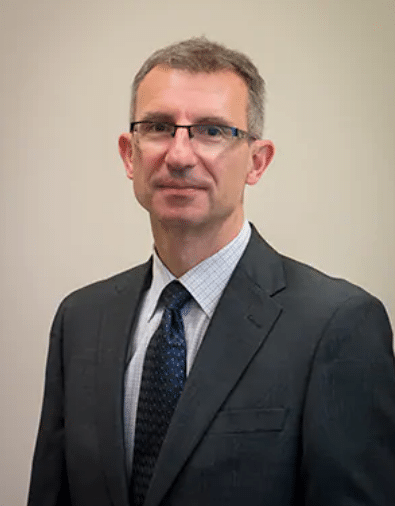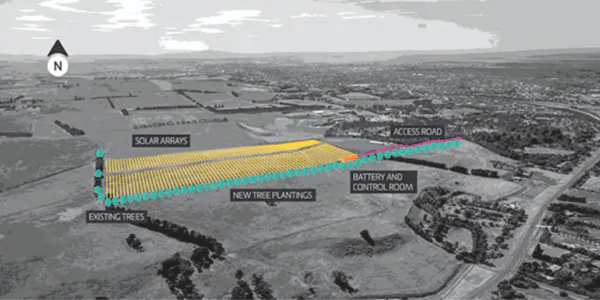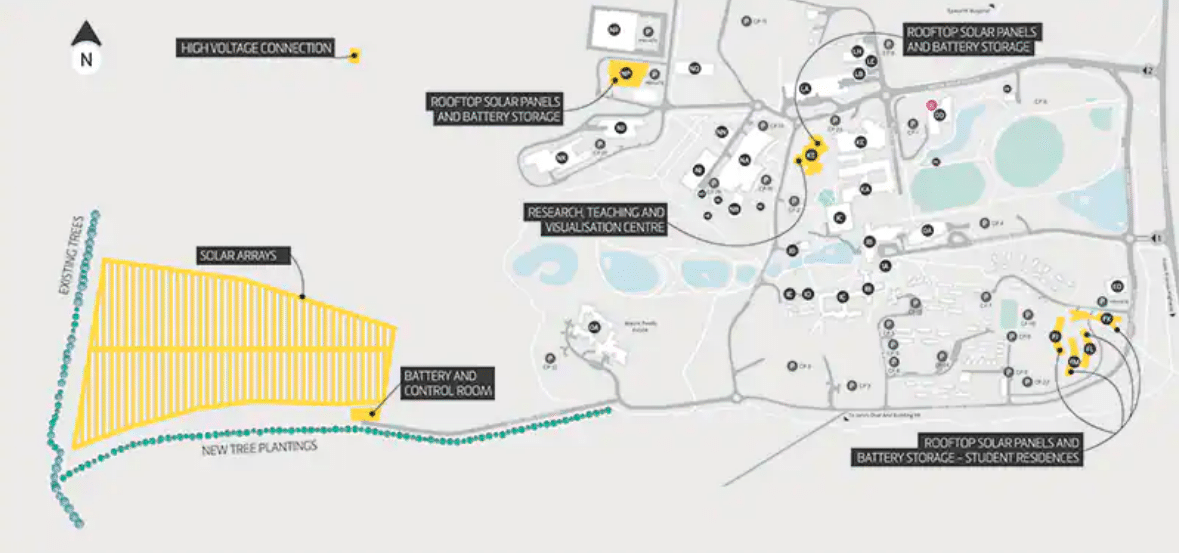The new microgrid installed at Deakin University’s Waurn Ponds campus isn’t just a means to power itself renewably (though it is, of course, also that), it’s living laboratory – a chance to model, test, and optimise what’s possible with power.
“We have 6,000 data points on our microgrid,” Director of Deakin’s Energy Initiative, Dr Adrian Panow, told pv magazine Australia. “So it becomes a very complex system very, very quickly.”
Last week, Deakin unveiled the new set up – attracting guests like Dr Alan Finkel AO, who was previously Australia’s Chief Scientist and is currently Special Adviser to the Federal Government on Low Emissions Technology.
The $23 million microgrid is comprised of a 7 MW solar farm (made up of 23,000 ground mounted solar panels – the largest on any Australian university campus), a 2 MWh lithium iron phosphate battery, 250 kW of distributed rooftop solar (833 panels) as well as a series of smaller battery systems with a collective capacity of 30 kWh.

Deakin University
With this extensive infrastructure at the university’s disposal, its aspirations are growing. With no time to waste, it is already underway with a number of projects as part of its university-wide approach to energy research.
“The research is beyond just the poles and wires, it goes into broader issues, social equity,” Panow said.
For him, the microgrid is really an opportunity for the university and all the brains who populate it to become a power station operator – and to examine all the issues embedded in that, from electrical standards to cyber security, fairness and equity to the critical mass of virtual power plants.
Such questions, prompted by seismic shifts in the electricity generation, are not easily answered by traditional market operators. Their primary job will always be to keep Australia’s lights on. So interrogating these problems, testing, discovering what’s possible, is being taken up by institutions like Deakin.
“All of that becomes available because we’ve invested in the infrastructure,” Panow said. “Industry is moving so quickly, but when it’s within your campus, that conversation can really start.”
Distributed storage: can it offer real network support?
One of the first questions researchers at Deakin are taking up is whether batteries at lower voltage end of the spectrum can offer the support services which are proving lucrative for big batteries like the Hornsdale Power Reserve.
The question is “how much network support can be provided at the distribution level?”
“We’re already thinking of how to do that with our network.”
“It might actually be at time more valuable [for batteries] to discharge in the day… for a very short period, there’s high value in discharging. Getting that [timing] right is really important.”
Battery storage systems are technically capable of so much, the question Deakin is prioritising is not what they can do, but what they should do. “That’s when data scientists come in,” Panow said.
Developing a digital twin
While it may sound like a premise for a dystopic sci-fi film, Panow says that developing a digital twin for its microgrid is the universities top priority. Put simply, a digital twin is a virtual representation of, in this case, the university’s microgrid and all its components.
Given the infrastructure is real, physical and functioning today in the real world, it’s possible to develop a highly accurate, data-informed digital model.
Where digital twins prove crucial is for testing. It can be tweaked and re-tweaked, tested and trialled before hands are ever laid on the real multimillion system.
“When there’s a level of low enough risk that it’s going to affect the actual physical project, it can be implemented,” Panow said.

Deakin University
Microgrid project origins
Deakin’s microgrid was designed off the back of information gathered by other similar projects – namely the microgrids installed at ivy league Princeton University and the University of California, San Diego.
“When we started the project, we looked at other models and there were very few,” Panow explained. Part of Deakin’s strategy then was to identify other projects of relevance and visit them – which is precisely what Panow did, travelling the U.S. to see both university’s installations.
The knowledge Panow took from these was that if Deakin wanted to gather real world knowledge, its microgrid had to be big enough to be relevant not only for the university, but also for the district. Secondly, if the microgrid were to double as a source of research and knowledge, it needed to be considered from the get-go.
Lithium iron phosphate battery storage solution
How Deakin went about its battery selection is indicative of the university’s approach more generally. Rather than primarily opting for external consultation, the university used its internal battery research group to select a battery chemistry (it decided on for Lithium iron phosphate).
The university then got members of its arts and philosophy departments to write an ethical procurement statement – which specified the battery should contain neither cobolt, nor any other conflict materials.
Going to market with these specifications, Panow explained, took longer and limited the market, but ultimately was far truer to the institution’s goals. “It speaks to the university’s sustainability program.”
Deakin has now installed a 2 MWh BYD battery, which is physically larger than a traditional set up, but more environmentally friendly, according to Panow.
It is the first grid-connected battery of its chemistry and scale in Australia, which has meant the process has been more interactive and has afforded a greater learning curve for network operators.
Agenda-setting ambitions
Deakin University recently brought forward its carbon-neutral target by five years, aiming for 2025. The university now wants to be carbon negative, that is to abate more carbon than it generates, by 2030.
Its microgrid is just part of that solution – but one which will have implications beyond the university’s campus. The research which is being, and will be, conducted there is rarely just research for research sake, Panow said. Rather, it is and will continue to be industry and application focused.
“You don’t solve the bigger energy issues with a widget, you solve them with a transaction,” Panow said.
Armed with a plethora of devices, minds, and constellations, Deakin University hopes to become a hub discovering not just what’s possible, but what’s ideal when it comes to using renewable energy.
This content is protected by copyright and may not be reused. If you want to cooperate with us and would like to reuse some of our content, please contact: editors@pv-magazine.com.









By submitting this form you agree to pv magazine using your data for the purposes of publishing your comment.
Your personal data will only be disclosed or otherwise transmitted to third parties for the purposes of spam filtering or if this is necessary for technical maintenance of the website. Any other transfer to third parties will not take place unless this is justified on the basis of applicable data protection regulations or if pv magazine is legally obliged to do so.
You may revoke this consent at any time with effect for the future, in which case your personal data will be deleted immediately. Otherwise, your data will be deleted if pv magazine has processed your request or the purpose of data storage is fulfilled.
Further information on data privacy can be found in our Data Protection Policy.